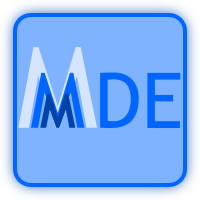

Mathematical modelling is pervasive in classical engineering, though it may use informal representations to communicate the models. This is what enables systematic and “normal” (refer Vincenti) approaches to solving engineering problems, which is the true basis of engineering. The models help classify problems, and, a problem having been classified, normal engineering enables the application of cookbook methods for their solution. There is no question that these models have to be mathematically based, even if an informal representation may prove sufficient in a given situation. Modelling is performed in standardized notations and using formalisms that have proved their value over time. The representation of the mathematics may not be that of the mathematicians who developed the mathematics, but instead may be “engineering oriented”.
However, what is not often noticed is that modelling itself is subject to normal practices, in the sense of Vincenti. So, problems are classified, appropriate models are known in outline for a given class of problems (refer Polanyi), standard analysis methods are available for given classes of models. So engineering models themselves are subject to cookbook methods. (In case you did not notice, this is actually an application of the metamodelling methodology in action!)